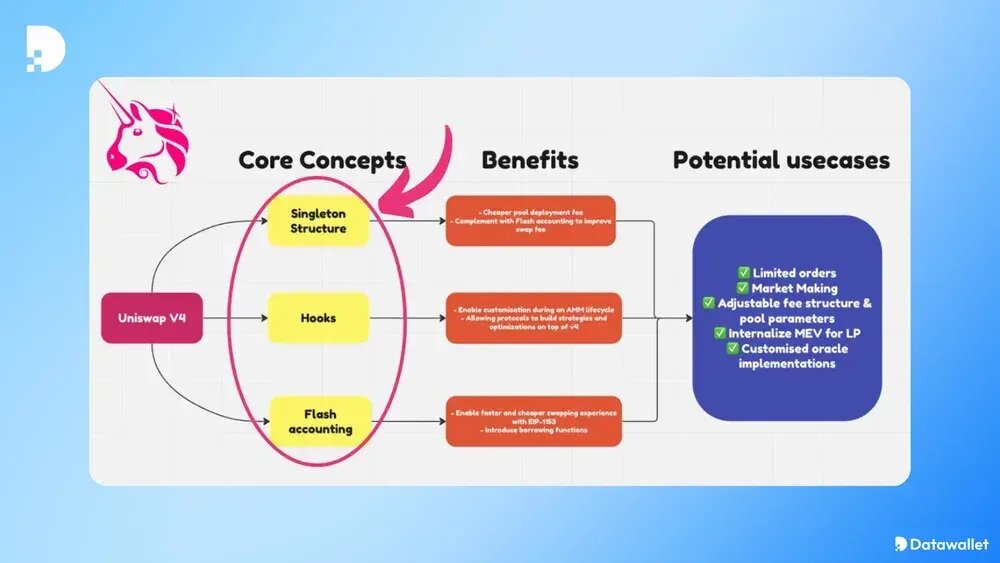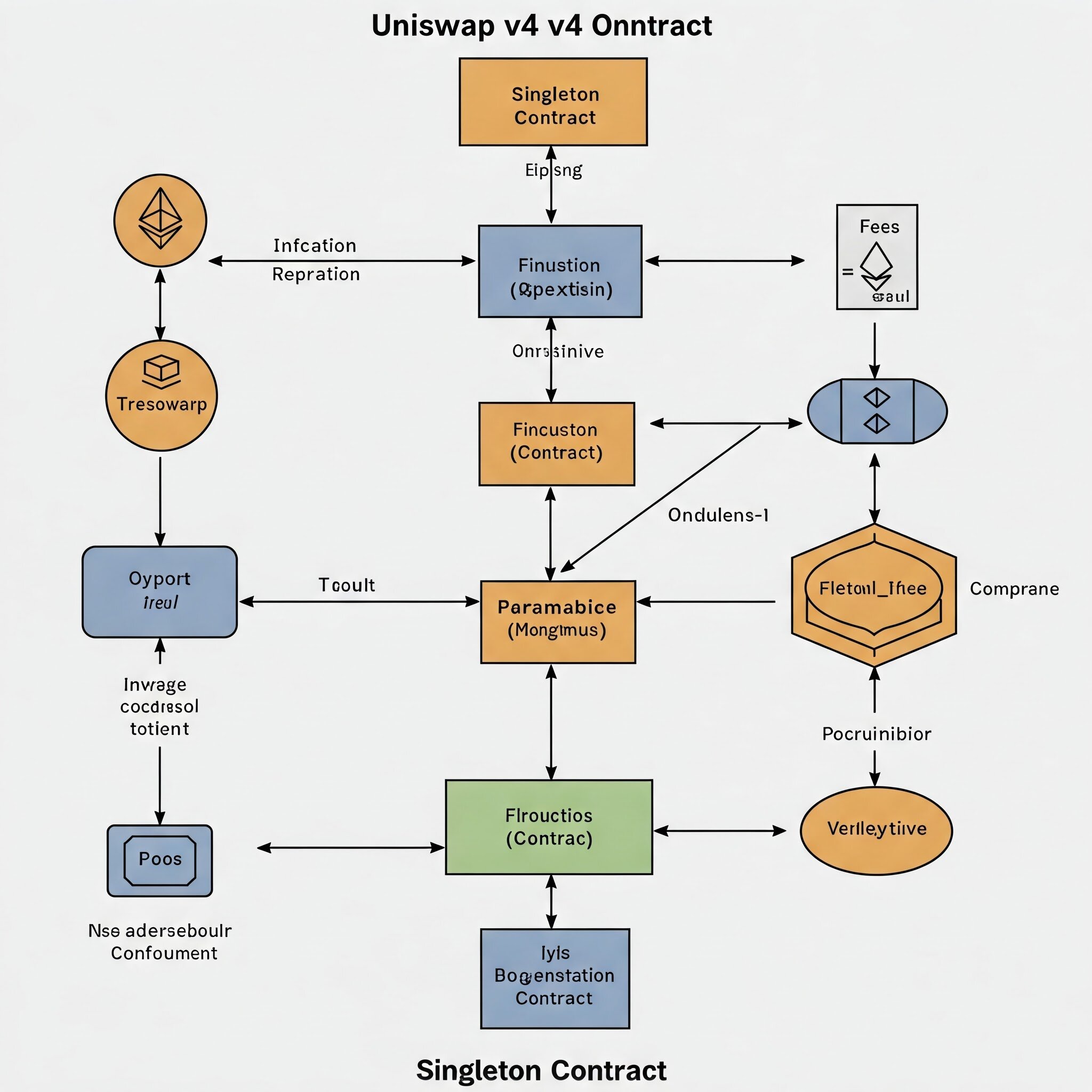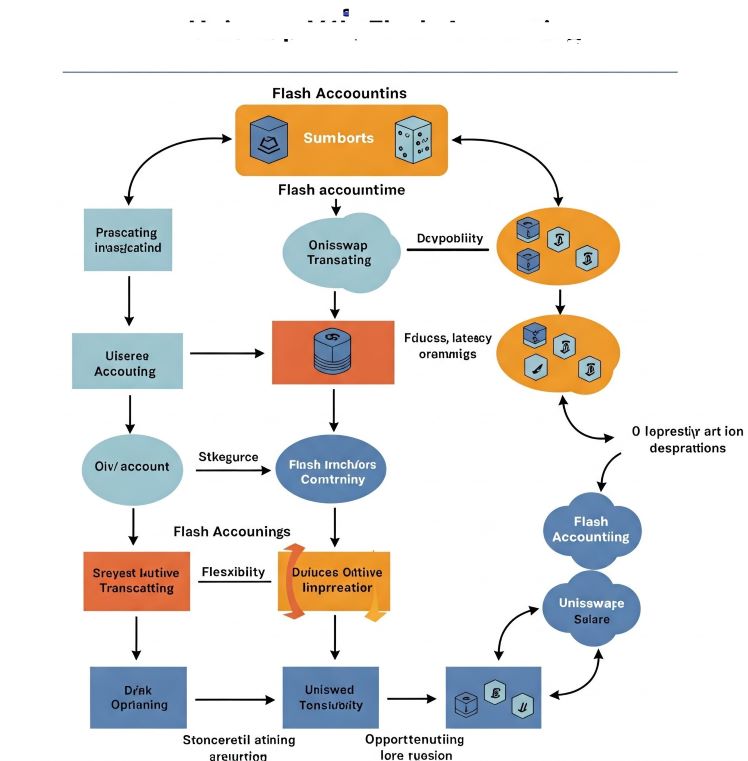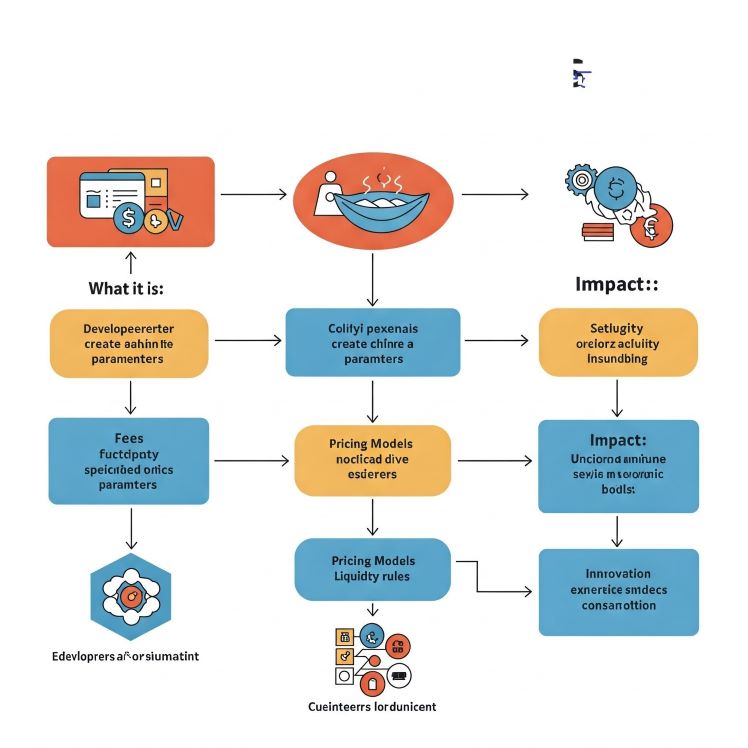Hooks
in details

|
1. HOOKS are smart contract
plugins for Uniswap v4 pools.
2. They allow developers to customize pool behavior at key lifecycle
stages.
3. Hooks can execute code during actions like swaps, liquidity
provision, or fee adjustments.
4. Uniswap v4 introduces a modular architecture for hooks.
5. Developers deploy hooks as standalone smart contracts.
6. Hooks are attached to specific pools during their creation.
7. They enable features like dynamic fees, on-chain limit orders, or
TWAP (time-weighted average price) oracles.
8. Hooks can enforce custom rules for liquidity providers or traders.
9. They can integrate with external protocols for advanced DeFi use
cases.
10. Uniswap v4 uses a singleton contract model, reducing gas costs.
11. Hooks leverage callbacks to interact with the pool contract.
12. Developers can create permissionless or permissioned hooks.
13. Examples include auto-compounding rewards or MEV protection
mechanisms.
14. Hooks are written in Solidity, Ethereum's smart contract language.
15. They must adhere to Uniswap's interface specifications.
16. Testing hooks is critical to ensure security and efficiency.
17. Uniswap provides documentation and templates for hook development.
18. Hooks can be open-sourced or proprietary, depending on the
developer's goals.
19. They expand Uniswap's functionality without altering its core
protocol.
20. Hooks empower developers to innovate on DeFi's most popular DEX.
This innovation makes Uniswap v4 highly flexible, enabling developers
to build tailored solutions for diverse trading and liquidity
management needs.
Features
Interesting features that can be implemented with hooks.
Onchain limit orders that are filled at tick prices
Dynamic fees rooted in volatility or other determinants
Funneling out-of-range liquidity to lending platforms
Auto-composed LP fees re-integrated into LP positions
MEV profits being internally distributed back to liquidity providers
A TWAMM market maker with time-weighted averaging to execute large orders over time
Creating custom onchain oracles (i.e. median, truncated) such as geomean oracles
|



